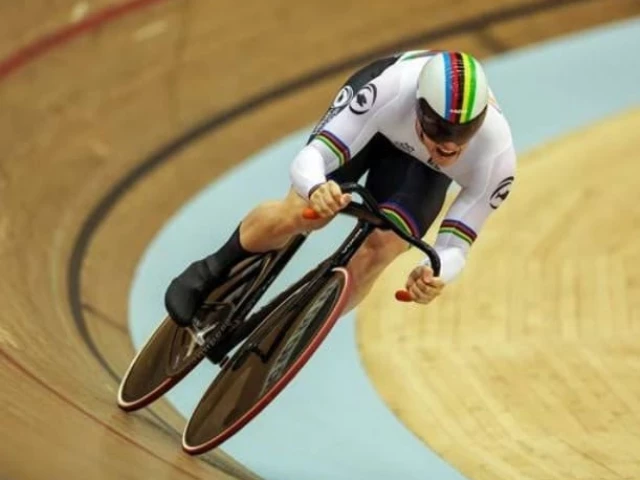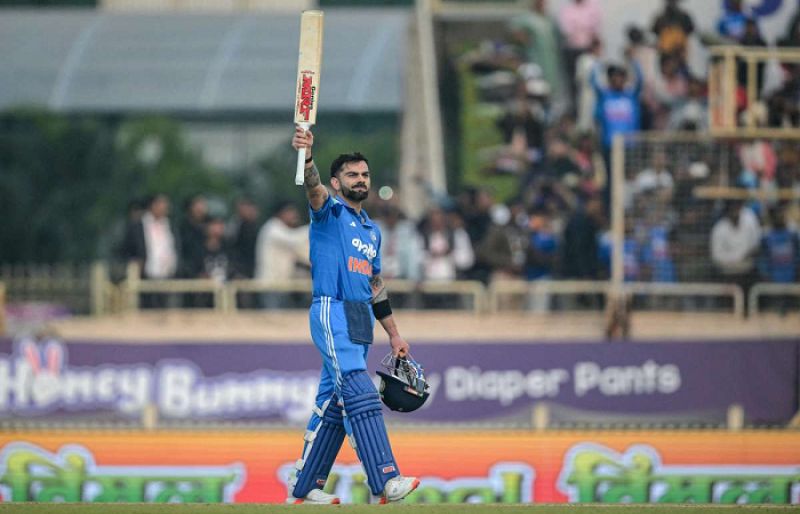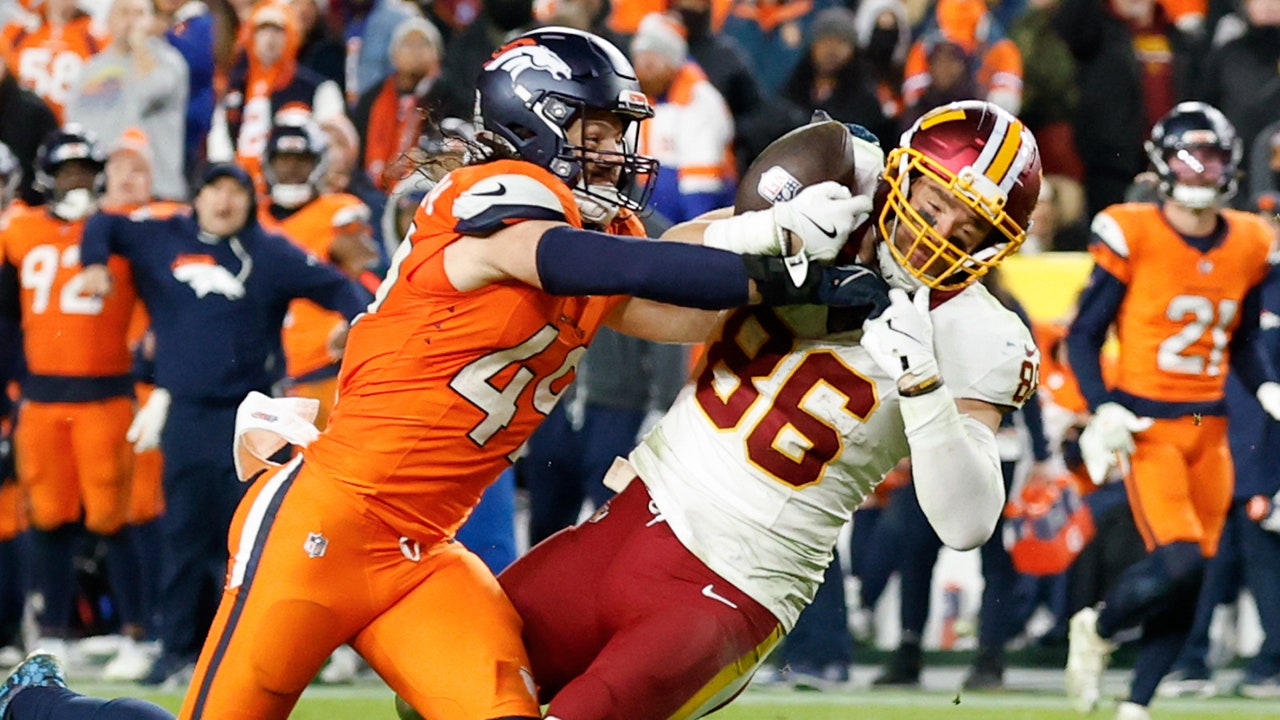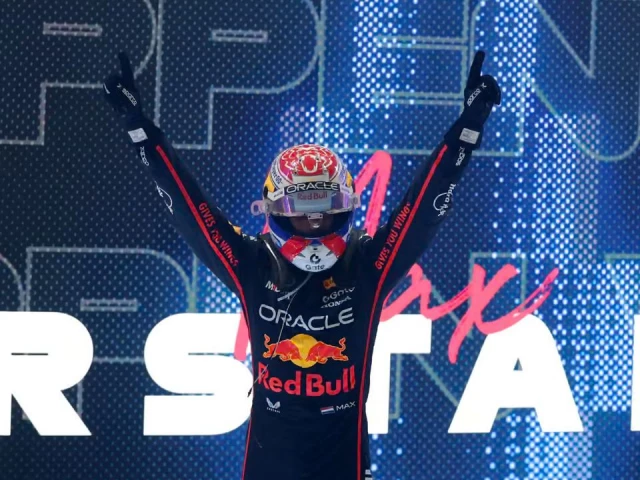Sports
Pakistan’s top cyclists to vie for National Championship title in November | The Express Tribune

ISLAMABAD:
Pakistan Cycling Federation has officially announced that the 70th National Track Cycling Championship 2025 will be hosted in Lahore from November 15 to 17. The prestigious event, regarded as one of the federation’s oldest and most competitive fixtures, will bring together the country’s leading cyclists to compete for national honors.
The championship will feature men and women competing in senior and junior categories, with teams from all provinces and departments taking part. Events such as sprint, team pursuit, time trial, and individual races are expected to be part of the program, providing a platform for emerging riders to display their abilities.
Pakistan Cycling Federation (PCF) President Syed Azhar Ali Shah emphasized the importance of the event in promoting the sport and scouting new talent. “The National Track Championship is a key fixture in our annual calendar, and we look forward to a spirited participation from all provinces and departments,” he said.
He added that affiliated units have been directed to hold preparatory camps to ensure their cyclists arrive in peak condition. The federation will soon issue detailed guidelines, including technical regulations and safety protocols.
The PCF remains dedicated to advancing cycling across Pakistan through improved facilities, grassroots development, and regular national-level competitions. By encouraging participation from youth and women, the federation aims to build a stronger foundation for the sport’s future in the country.
Sports
India Triumphs Over South Africa in First ODI Thanks to Kohli’s Heroics – SUCH TV

Star batsman Virat Kohli slammed a record-extending 52nd one-day international century, scoring 135 off 120 balls to lead India to a thrilling 17-run victory over a determined South Africa in the first ODI on Sunday at Ranchi.
Kohli shared a second-wicket partnership of 136 runs with fellow stalwart Rohit Sharma, setting India on course for a competitive 349-8.
South Africa’s number eight, Corbin Bosch, made a valiant 67 off 51 balls, keeping his team in contention until the final moments. Entering the 50th over, the visitors needed 18 runs with one wicket left, but Bosch fell on the second ball, leaving South Africa all out for 332.
Earlier, Matthew Breetzke (72) and Marco Jansen (70) had forged a fighting 97-run stand for the sixth wicket, reviving the chase after South Africa slipped to 11-3 and 77-4.
Kuldeep Yadav was the standout bowler for India, taking 4-68, including a crucial double strike to dismiss Jansen and Breetzke in just three balls—a turning point in the match that helped India secure a 1-0 lead in the three-match series.
Kohli, now 37, raised his 83rd international century across all three formats with a boundary off Jansen, celebrating with the raucous home crowd.
“If you’ve played over 300 games and so much cricket, you know your reflexes and physical ability are there to bat long,” said Kohli, the player of the match.
“As long as you’re hitting the ball well and playing good cricket, it’s about being physically fit, mentally ready, and excited.”
Kohli mania
An enthusiastic Indian fan breached security and ran onto the field to touch Virat Kohli’s feet before being restrained.
Kohli now holds the record for the most ODI hundreds, with Indian legend Sachin Tendulkar second with 49.
In a single format, he also leads the list, while Tendulkar’s 51 hundreds came in Tests.
Kohli and 38-year-old Rohit Sharma, who scored 57, now only play ODIs after retiring from T20s and Tests.
Their presence strengthened India, led by KL Rahul in the absence of the injured Shubman Gill, following a 2-0 Test series whitewash against South Africa.
Rohit lost fellow opener Yashasvi Jaiswal early for 18, but Kohli walked in to a roar from a 38,000-strong crowd.
The pair steadied the innings before Rohit was trapped lbw by Marco Jansen.
Rohit hit three sixes in his 51-ball knock, taking his total to 352 sixes in ODIs, surpassing Pakistan’s Shahid Afridi (351).
Kohli accelerated after reaching his first century since February, hitting off-spinner Prenelan Subrayen for two fours and two sixes in the 39th over, scoring 21 runs. He eventually fell to Nandre Burger, caught by Ryan Rickelton, after hitting 11 fours and seven sixes.
KL Rahul contributed 60 off 56 balls, while Ravindra Jadeja added 32 off 20.
Corbin Bosch recorded his first ODI half-century, keeping South Africa in the contest, making the series opener an exciting match ahead of the second ODI in Raipur on Wednesday.
“Great to sit in the change room and watch the guys do their thing,” said stand-in skipper Aiden Markram. “Never losing the belief that we can pull off a rabbit from the hat.”
Sports
Broncos secure thrilling OT victory over Commanders behind clutch performances

NEWYou can now listen to Fox News articles!
The Denver Broncos and Washington Commanders’ matchup on Sunday featured several great plays, but the most impactful came in overtime.
It didn’t take long for the Broncos to score. Bo Nix made four completions, including a 41-yard pass to Evan Engram, and then handed the ball off to running back RJ Harvey, who scored from five yards out to take a 27-20 lead.
CLICK HERE FOR MORE SPORTS COVERAGE ON FOXNEWS.COM
Denver Broncos running back RJ Harvey celebrates after scoring during the second half of an NFL football game against the Washington Commanders Sunday, Nov. 30, 2025, in Landover, Maryland. (AP Photo/Stephanie Scarbrough)

Washington Commanders quarterback Marcus Mariota (8) throws during the first half of an NFL football game against the Denver Broncos Sunday, Nov. 30, 2025, in Landover, Maryland. (AP Photo/Nick Wass)
Commanders quarterback Marcus Mariota created some late-game heroics. He found Deebo Samuel on 3rd-and-14 for a 38-yard gain. He connected with Terry McLaurin to bring the game to within one point. With nothing to lose, the Commanders decided to go for two and the win. Mariota dropped back to pass and his attempt to Jeremy McNichols was blocked by Broncos pass rusher Nik Bonitto.
The Broncos won the game, 27-26.
Nix finished 29-of-45 for 321 yards and a touchdown pass. Harvey had 35 rushing yards and two rushing touchdowns.
Harvey and Bonito’s overtime heroics were just two of a handful of great plays made during the game.
Nix did his best to pull out all the stops. He helped put Denver ahead before halftime when he threw a touchdown pass to Courtland Sutton as he was falling to the ground. He avoided the rush and his calf was about to hit the ground before he fired the ball to Sutton in the end zone.

Denver Broncos linebacker Alex Singleton (49) breaks up a pass intended for Washington Commanders tight end Zach Ertz (86) in the fourth quarter of the game at Northwest Stadium on Nov. 30, 2025. (Geoff Burke/Imagn Images)
BRONCOS’ BO NIX THROWS TD PASS WHILE FALLING TO GROUND IN STUNNING PLAY
Commanders wide receiver Treylon Burks likely said, “Watch this,” before he made his sensation play. Burks received a pass from Mariota in the end zone. He, somehow, made a one-handed catch for a crucial go-ahead touchdown.
It was Burks’ second career touchdown catch and it was one that the Commanders really needed.
Mariota was trying to keep the drive alive with under four minutes to go in the game. He found tight end Zach Ertz open in the middle of the field. The ball was thrown high and Ertz was able to grab the pass and bring it down.

Denver Broncos quarterback Bo Nix throws during the first half of an NFL football game against the Washington Commanders Sunday, Nov. 30, 2025, in Landover, Maryland. (AP Photo/Stephanie Scarbrough)

Washington Commanders running back Chris Rodriguez Jr. (36) celebrates after scoring during the first half of an NFL football game against the Denver Broncos Sunday, Nov. 30, 2025, in Landover, Maryland. (AP Photo/Nick Wass)

Denver Broncos wide receiver Courtland Sutton (14) celebrates after catching a touchdown pass from quarterback Bo Nix, right, during the first half of an NFL football game against the Washington Commanders Sunday, Nov. 30, 2025, in Landover, Maryland. (AP Photo/Stephanie Scarbrough)
But just as he was going to secure the catch, Broncos linebacker Alex Singleton knocked the ball loose and the pass was incomplete. Washington punted the ball away.
Singleton was playing in his first game since he underwent testicular cancer surgery three weeks ago. It was a big play, but it came just a few minutes too early as Mariota would lead the Commanders down the field to tie the game.
Mariota played as well as one could play in a hard-fought game. He was 28-of-50 with 294 passing yards and two touchdown passes. He also had 55 yards on the ground.
Bundle FOX One and FOX Nation to stream the entire FOX Nation library, plus live FOX News, Sports, and Entertainment at our lowest price of the year. The offer ends on Jan. 4, 2026. (Fox One; Fox Nation)
CLICK HERE TO DOWNLOAD THE FOX NEWS APP
Ertz finished with 10 catches for 106 yards. McLaurin had seven catches for 96 yards.
Denver improved to 10-2 with the win and have won nine straight games. Washington fell to 3-9.
Follow Fox News Digital’s sports coverage on X and subscribe to the Fox News Sports Huddle newsletter.
Sports
F1 set for final-race showdown as Verstappen exploits McLaren blunder | The Express Tribune

The Red Bull driver made an immediate pit stop during an early safety car intervention
Red Bull’s Max Verstappen made it back-to-back GP wins after his early pit stop during a safety car period proved a crucial tactical move. Photo: REUTERS
DOHA:
The three-way F1 title fight will go down to the last race of the season after Max Verstappen took full advantage of a McLaren blunder to win the Qatar Grand Prix on Sunday.
The Red Bull driver made an immediate pit stop during an early safety car intervention, when McLaren duo Oscar Piastri and Lando Norris stayed out, and he capitalised by driving with cool precision to triumph in convincing style.
His win lifted him into second place in the title race with 396 points, 12 behind championship leader Norris, who finished fourth.
Pole-sitter Piastri slipped to third in the standings but trimmed his deficit to Norris to 16 points with one race remaining in Abu Dhabi next Sunday, where Verstappen has won four times in the last five years.
“It’s all possible,” said Verstappen, who is chasing a fifth successive world title.
Britain’s Norris still has his nose in front heading to Abu Dhabi and will take the title with a podium finish, no matter what his rivals do.
Dutchman Verstappen came home 7.995 seconds ahead of Piastri with Carlos Sainz third for Williams, ahead of Norris and the Mercedes pair of Kimi Antonelli and George Russell.
It was Verstappen’s seventh win of the season, his third in succession in Qatar and 70th of his career.
“That was an incredible race for us,” said Verstappen, who had written off his title hopes at the end of August before embarking on a sequence of results that turned a 104-point deficit to Piastri into a four-point advantage.
Piastri ‘speechless’
“We made the right call as a team to box under the safety car and it was scrappy, but we got there in the end.”
Red Bull’s race strategist Hannah Schmitz joined Verstappen on the podium to mark her part in his success.
Australia’s Piastri, who had a potential win taken from him by poor decisions, said: “I’m speechless. I have no words.
“Clearly we didn’t get it right tonight. I drove the best race I could and there was nothing left out there.
“In hindsight it’s pretty obvious what we should have done, but we’ll discuss it as a team. It’s obviously tough to swallow.”
At lights out Piastri surged clear with a near-perfect start from pole.
Behind him, Verstappen swooped to pass Norris round the outside of Turn One.
On lap seven Sauber’s Nico Hulkenberg tagged Pierre Gasly’s Alpine and spun off, prompting a safety car.
Verstappen pitted immediately from second for fresh mediums, but the McLaren pair stayed out — effectively missing out on a “free stop” in a race where two stops were mandatory because of a 25-lap limit for each set of tyres.
“We should have followed him in, no? If we knew the car in front was staying out?” asked Norris on team radio.
Norris would have won his maiden F1 crown with victory in Qatar.
Tense finale
The safety car period ended on lap 11 with Piastri surging clear again from Norris.
However, as the only team not to have stopped, they faced two mandatory stops while the rest required only one.
The Australian pitted on lap 24 and re-joined fifth before Norris made his first stop, handing the lead to Verstappen.
Verstappen led by 18 seconds before he pitted again for hards, on lap 32, the Dutchman returning third behind the two McLarens knowing they both had a further stop to make.
Unable to shake off Verstappen, the McLaren pair pitted on laps 43 and 45, hoping their new hard rubber would allow them to chase him down, but Piastri rejoined second 15 seconds adrift and Norris returned fifth behind Sainz and Antonelli.
It meant a tense finale for the McLaren pair, who had the fastest cars in the race and had started with a front-row lockout.
But they ultimately threw it away with a basic strategy error that ensured the drivers’ title race goes down to the wire.
-

 Sports1 week ago
Sports1 week agoWATCH: Ronaldo scores spectacular bicycle kick
-

 Entertainment1 week ago
Entertainment1 week agoWelcome to Derry’ episode 5 delivers shocking twist
-

 Politics1 week ago
Politics1 week agoWashington and Kyiv Stress Any Peace Deal Must Fully Respect Ukraine’s Sovereignty
-

 Business1 week ago
Business1 week agoKey economic data and trends that will shape Rachel Reeves’ Budget
-

 Tech6 days ago
Tech6 days agoWake Up—the Best Black Friday Mattress Sales Are Here
-

 Politics1 week ago
Politics1 week ago53,000 Sikhs vote in Ottawa Khalistan Referendum amid Carney-Modi trade talks scrutiny
-

 Fashion1 week ago
Fashion1 week agoCanada’s Lululemon unveils team Canada kit for Milano Cortina 2026
-

 Tech6 days ago
Tech6 days agoThe Alienware Aurora Gaming Desktop Punches Above Its Weight







